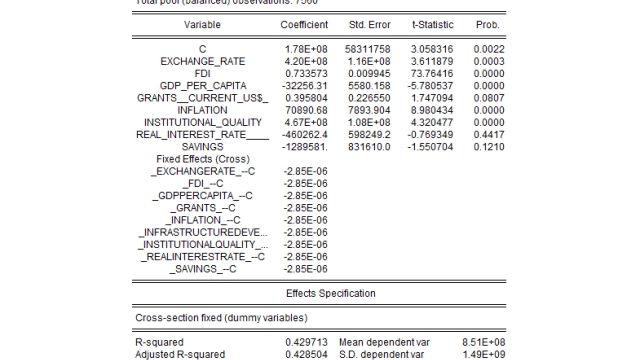Cracking the Code: Demystifying Dissertation Data Analysis
Are you feeling overwhelmed by the prospect of conducting data analysis for your dissertation or capstone project? Fear not, for we are here to demystify the process and help you crack the code of dissertation data analysis. In the world of academic research, data analysis plays a crucial role in transforming raw data into meaningful insights. It is the key that unlocks the hidden treasures within your dataset, providing you with the evidence needed to support your research findings. Whether you’re working with quantitative or qualitative data, understanding the best practices and techniques for analyzing your data is essential for ensuring the validity and reliability of your study.
Dissertations and capstones are significant endeavors that require meticulous attention to detail, particularly when it comes to analyzing the data collected. This presents a unique set of challenges, as it involves handling large amounts of information, organizing it effectively, and drawing accurate conclusions. Additionally, the choice of data analysis methods can greatly impact the reliability and validity of your findings. As such, it is crucial to approach this stage of your research with methodological rigor and a comprehensive understanding of the analytical tools at your disposal.
In this article, we will guide you through the process of dissertation data analysis, providing you with the knowledge and skills needed to navigate this intricate terrain. We will explore various data analysis techniques, discuss the considerations for selecting the most appropriate method for your study, and offer practical tips for ensuring the accuracy and validity of your findings. By the end of this article, you will feel equipped to unravel the secrets of dissertation data analysis and present robust, compelling results that contribute to the advancement of knowledge in your field. So, let’s embark on this journey together and unlock the power of data analysis in your dissertation or capstone project!
Importance of Data Analysis in Dissertations
Data analysis plays a crucial role in dissertations and capstones, providing researchers with the means to draw meaningful conclusions from their collected data. Without proper analysis, the vast amount of information gathered during the research process would remain disorganized and difficult to comprehend. Through effective data analysis, researchers can identify patterns, trends, and relationships within their data, ultimately contributing to the overall validity and significance of their findings.
One of the key reasons why data analysis is essential in dissertations is that it enables researchers to test hypotheses and answer research questions. By applying various statistical techniques, researchers can objectively examine their data and determine whether their initial expectations or hypotheses are supported by the evidence. This process not only offers valuable insights but also enhances the credibility and rigor of the research.
Moreover, data analysis helps researchers uncover hidden insights or unexpected findings that may not have been originally anticipated. Exploratory data analysis techniques allow researchers to delve deeper into the collected data, exploring different variables and relationships that could potentially influence the research outcomes. These unexpected insights can often inspire new research directions or prompt researchers to reevaluate existing theories, adding further value to the dissertation.
By employing appropriate data analysis methods, researchers can also identify and mitigate potential biases or confounding variables that may affect the integrity of their research. Through careful statistical analysis, researchers can control these variables, ensuring that their findings are robust and reliable. This process strengthens the validity of the research, enabling researchers to confidently make informed conclusions and contribute to their respective fields.
In summary, data analysis is an integral component of dissertations and capstones as it empowers researchers to derive meaningful insights from their data. It aids in hypothesis testing, facilitates the discovery of unexpected findings, and helps uncover potential biases. By employing appropriate data analysis techniques, researchers can elevate the quality and credibility of their research, bringing them closer to cracking the code and demystifying the complexities of dissertation data analysis.
Common Methods for Dissertation Data Analysis
In the realm of dissertations and capstones, one of the key aspects is the process of data analysis. It involves making sense of the gathered data to draw meaningful conclusions and support the research objectives. There are several common methods employed for dissertation data analysis.
The first method is quantitative analysis, which involves the use of numerical data. This method often utilizes statistical techniques to analyze large datasets. Statistical tests such as regression analysis, t-tests, and chi-square tests are frequently employed to examine relationships, differences, and associations within the data. This method enables researchers to draw statistical inferences and make generalizations based on the data at hand.
Another commonly used method is qualitative analysis, which focuses on understanding the underlying meanings, perspectives, and experiences expressed within the collected data. Qualitative analysis involves techniques such as thematic analysis, content analysis, and narrative analysis. Researchers immerse themselves in the data, identifying patterns, themes, and key insights to gain a deeper understanding of the research topic.
Lastly, mixed methods analysis combines both quantitative and qualitative approaches. This method allows for a comprehensive examination of the research question by integrating numeric data with rich qualitative insights. By combining the strengths of both methods, researchers can triangulate findings, validate results, and provide a more holistic understanding of the data.
In summary, the common methods for dissertation data analysis include quantitative analysis, qualitative analysis, and mixed methods analysis. Each method offers unique approaches and techniques to uncover valuable insights from the gathered data. Choosing the most appropriate method depends on the research objectives, the type of data collected, and the overall research design.
Tips for Successful Dissertation Data Analysis
- Clearly Define Your Research Questions
Before diving into data analysis, it is crucial to have clearly defined research questions. These questions will serve as your guide throughout the entire analysis process. Take time to carefully formulate your questions, ensuring they are specific, focused, and align with the objectives of your dissertation. Well-defined research questions will help you stay on track and make sense of the data you collect.

- Choose the Right Analytical Tools
Selecting the appropriate analytical tools is key to conducting an effective dissertation data analysis. Depending on the nature of your research, you may need to utilize different statistical software packages or programming languages. Take the time to explore and familiarize yourself with the tools available to you. Consider reaching out to experts in your field for advice on which tools might be best suited for your data analysis needs.
- Organize and Cleanse Your Data
Before you begin analyzing your data, it is important to ensure it is organized and free from errors or inconsistencies. This involves reviewing, cleaning, and transforming your data to prepare it for analysis. Create a system for organizing your data files and variables, making it easier to locate and work with specific data points. Additionally, check for missing values, outliers, or any other issues that may affect the integrity of your analysis. By investing time in data organization and cleansing, you can ensure more accurate and reliable results.
By implementing these tips, you can demystify the data analysis process and set yourself up for success in your dissertation or capstone project. Remember to stay focused, utilize appropriate analytical tools, and maintain the integrity of your data throughout the analysis process.


